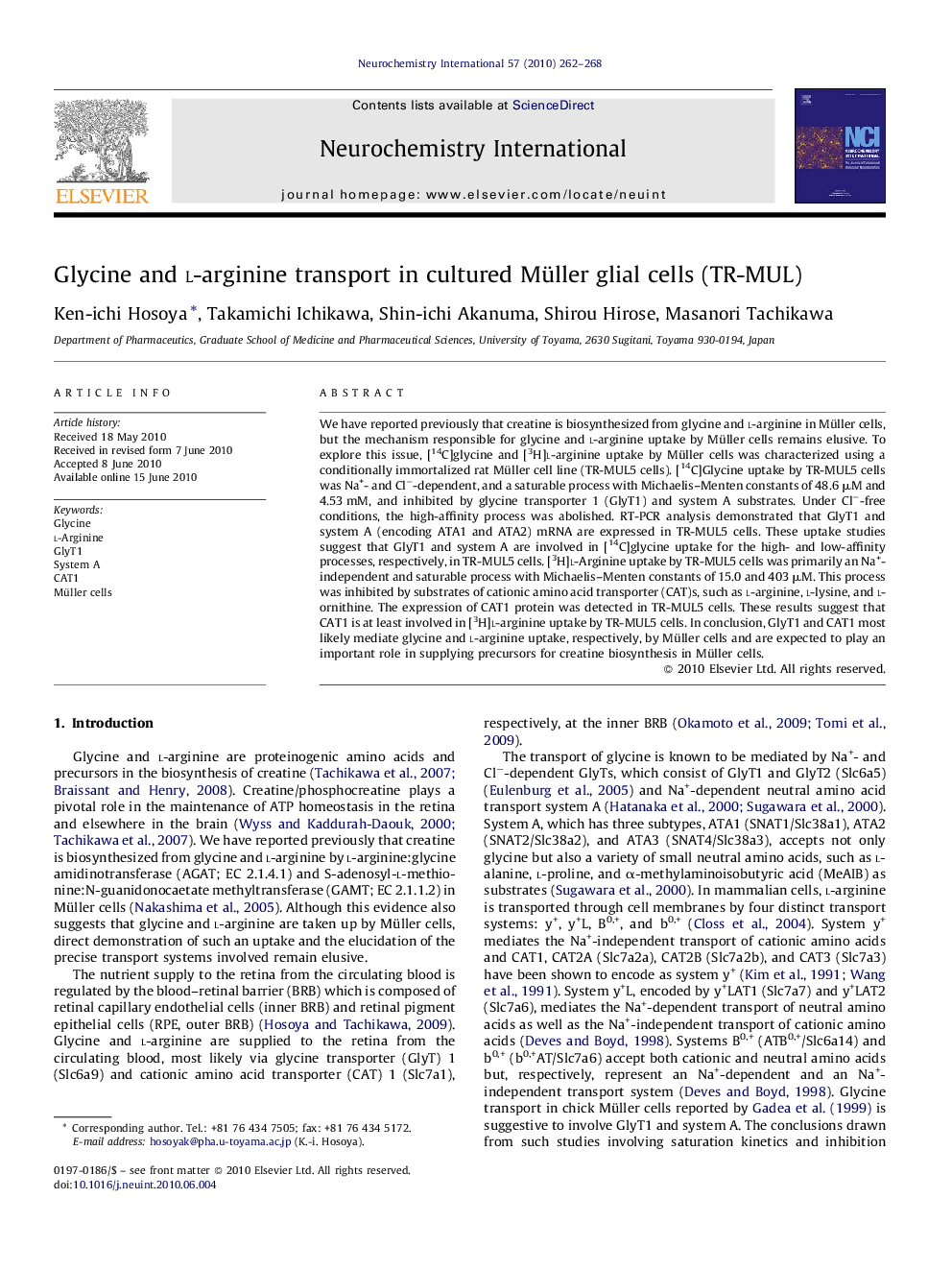| Article ID | Journal | Published Year | Pages | File Type |
|---|---|---|---|---|
| 2201308 | Neurochemistry International | 2010 | 7 Pages |
We have reported previously that creatine is biosynthesized from glycine and l-arginine in Müller cells, but the mechanism responsible for glycine and l-arginine uptake by Müller cells remains elusive. To explore this issue, [14C]glycine and [3H]l-arginine uptake by Müller cells was characterized using a conditionally immortalized rat Müller cell line (TR-MUL5 cells). [14C]Glycine uptake by TR-MUL5 cells was Na+- and Cl−-dependent, and a saturable process with Michaelis–Menten constants of 48.6 μM and 4.53 mM, and inhibited by glycine transporter 1 (GlyT1) and system A substrates. Under Cl−-free conditions, the high-affinity process was abolished. RT-PCR analysis demonstrated that GlyT1 and system A (encoding ATA1 and ATA2) mRNA are expressed in TR-MUL5 cells. These uptake studies suggest that GlyT1 and system A are involved in [14C]glycine uptake for the high- and low-affinity processes, respectively, in TR-MUL5 cells. [3H]l-Arginine uptake by TR-MUL5 cells was primarily an Na+-independent and saturable process with Michaelis–Menten constants of 15.0 and 403 μM. This process was inhibited by substrates of cationic amino acid transporter (CAT)s, such as l-arginine, l-lysine, and l-ornithine. The expression of CAT1 protein was detected in TR-MUL5 cells. These results suggest that CAT1 is at least involved in [3H]l-arginine uptake by TR-MUL5 cells. In conclusion, GlyT1 and CAT1 most likely mediate glycine and l-arginine uptake, respectively, by Müller cells and are expected to play an important role in supplying precursors for creatine biosynthesis in Müller cells.
